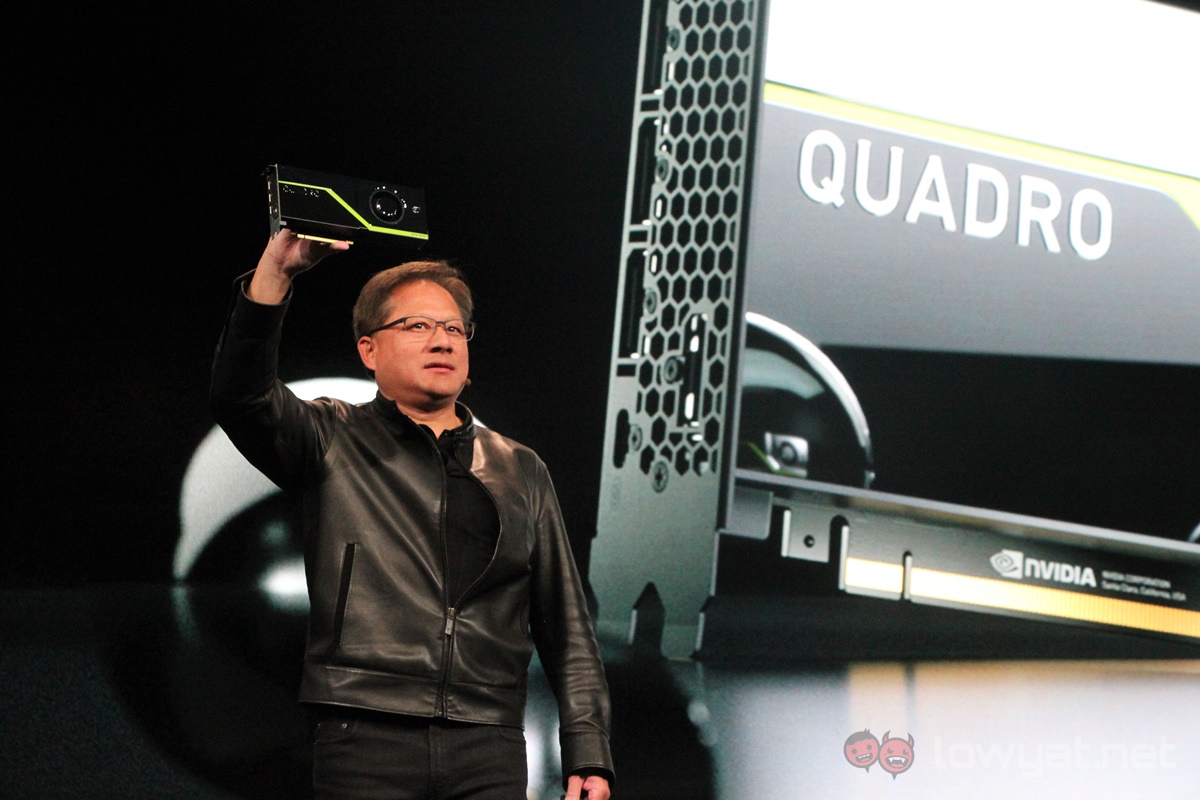Earlier today at the Siggraph 2018, NVIDIA officiallly announced its new Quadro RTX professional GPUs. More to the point, the new Quadro RTX series are also the first set of graphics cards to be powered by its new Turing GPU die architecture.
Riding on the wave of its push for the advancement of ray-tracing technology, the Turing GPU is fitted with what Jen-Hsun Huang, CEO of NVIDIA, describes as ray-tracing (RT) cores. The new cores even come with a unit measurement: Giga Rays. And on that note, the Turing GPU embedded within the new Quadro RTX cards are capable of outputting ray-tracing computations at a speed of up to 10 Giga Rays per second.
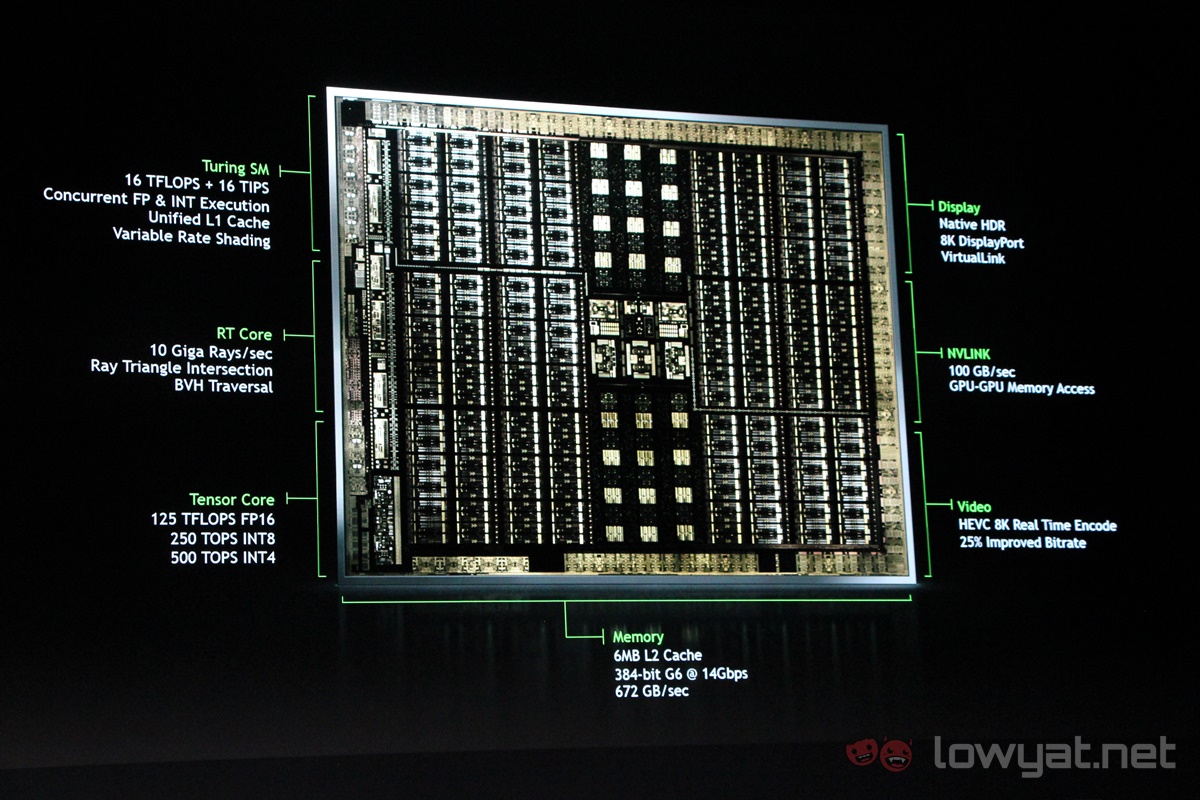
For context; ray-tracing is a graphical technique that traces (naturally) the path of light in a simulated environment. If and when the technique is applied properly, ray-tracing is capable of providing a very high degree of realism, be it in a static image or a scenario with lots of lights and movements.
The Turing GPU is also equipped with Tensor cores for AI applications. Statistically, these cores allow the new cards to perform computations of up to 125 TFLOPS in FP16, 250 TOPS (Tensor Operations Per Second) in INT8, and double that in INT16 calculations.
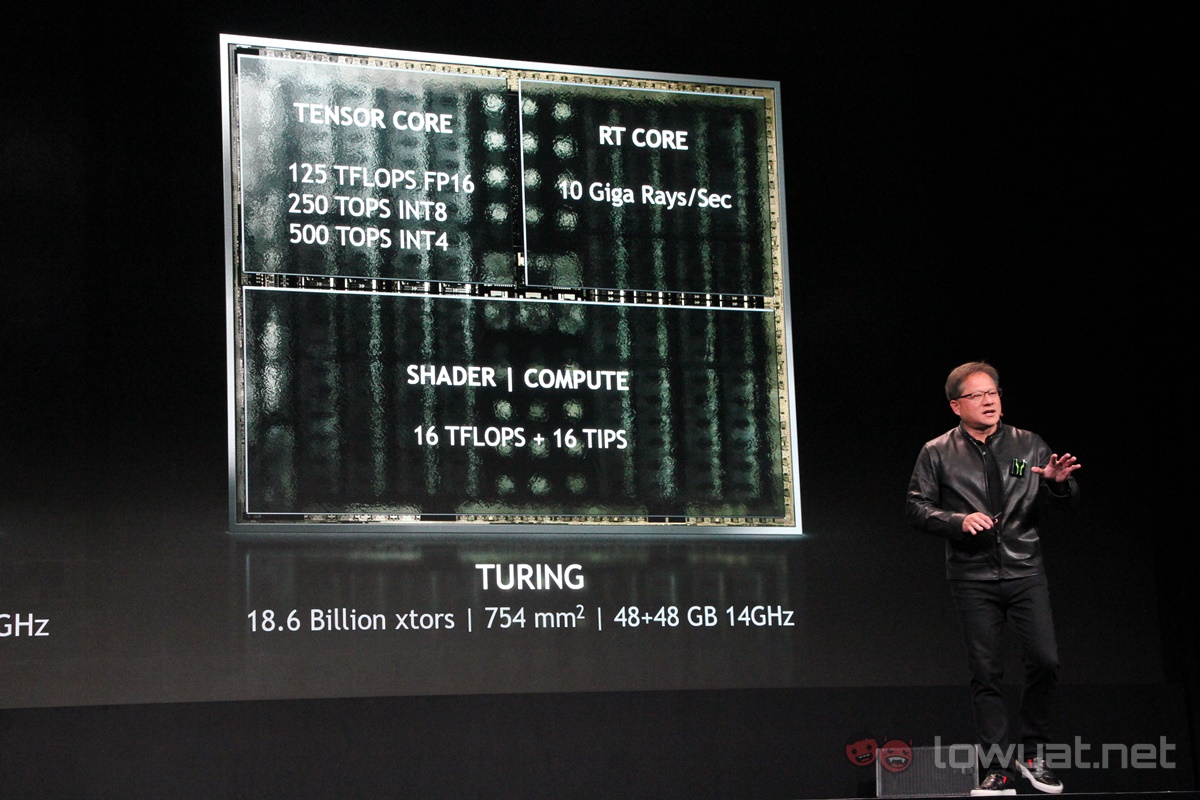
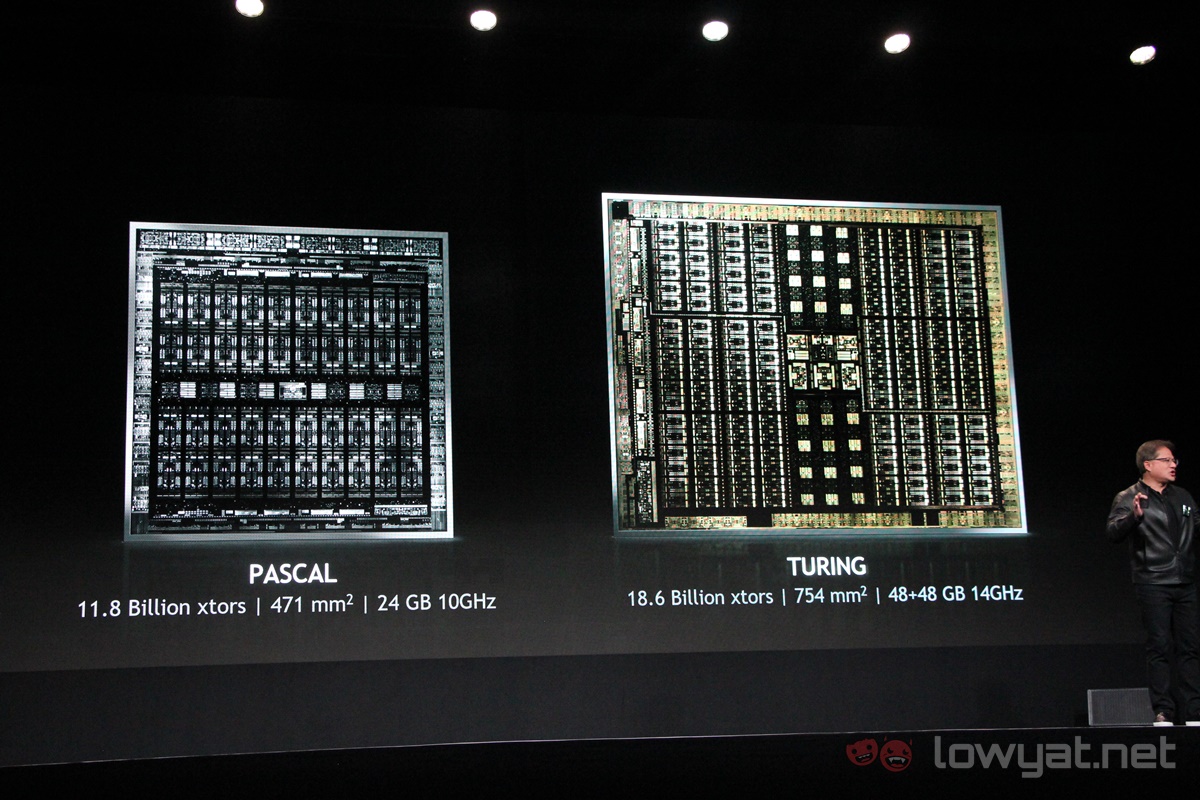
Getting into the specs; the new Quadro RTX series run on the new GDDR6 graphic memory interface. NVIDIA also announced three models for the series: the Quadro RTX 5000, the RTX 6000, and the top-of-the-line RTX 8000. The RTX 5000 will come with 16GB of GDDR6 memory; the RTX 6000 with 24GB, and the RTX 8000 will carry a whopping 48GB of GDDR6 memory inside of it.
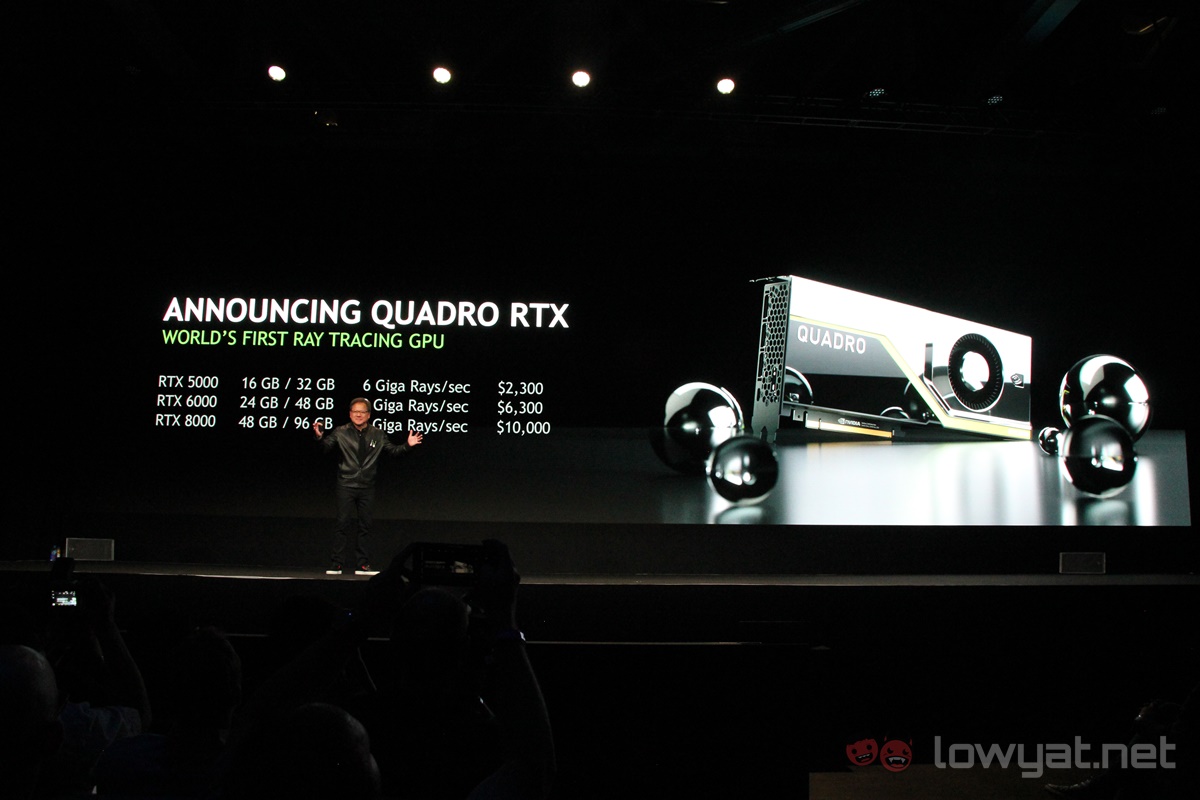
As one would expect of Quadro GPUs, these new GPUs don’t come cheap. Those of you looking to upgrade your workstation GPU with one of these cards will set you back US$2300 (~RM9421) for the entry-level RTX 5000, and a maximum of US$10000 (~RM41000) for the more premium-grade RTX 8000 GPU.
Before we forget; the new Quadro RTX series cards can also be paired with a secondary card, but it won’t be through an typical SLI bridge. To do this, NVIDIA created a new NV Link Bridge that enables a total of two Turing-powered GPUs to be paired together.
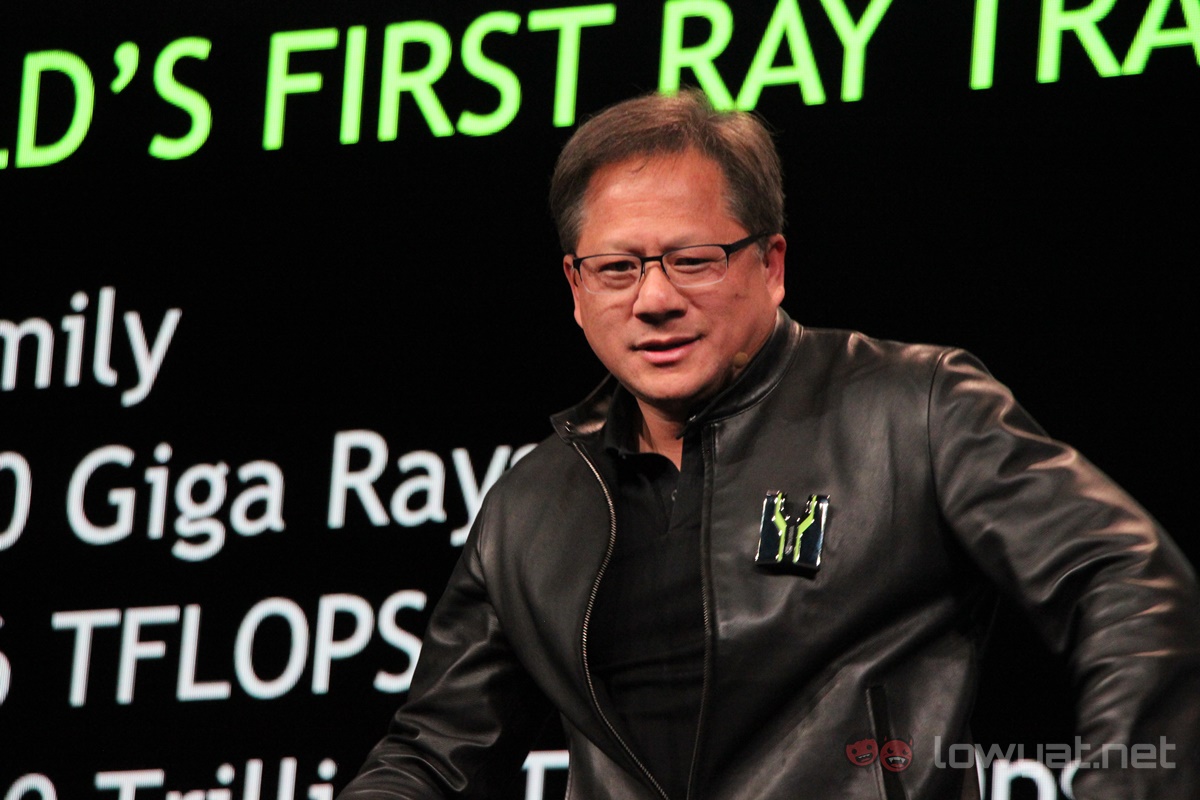
At the time of writing, NVIDIA did not give a specific launch date for its Quadro RTX series GPU. It also didn’t give any indication if the new Turing GPU architecture and its technology will somehow trickle down into the company’s next GeForce GTX series GPUs, or if it will have a totally different GPU architecture and name.
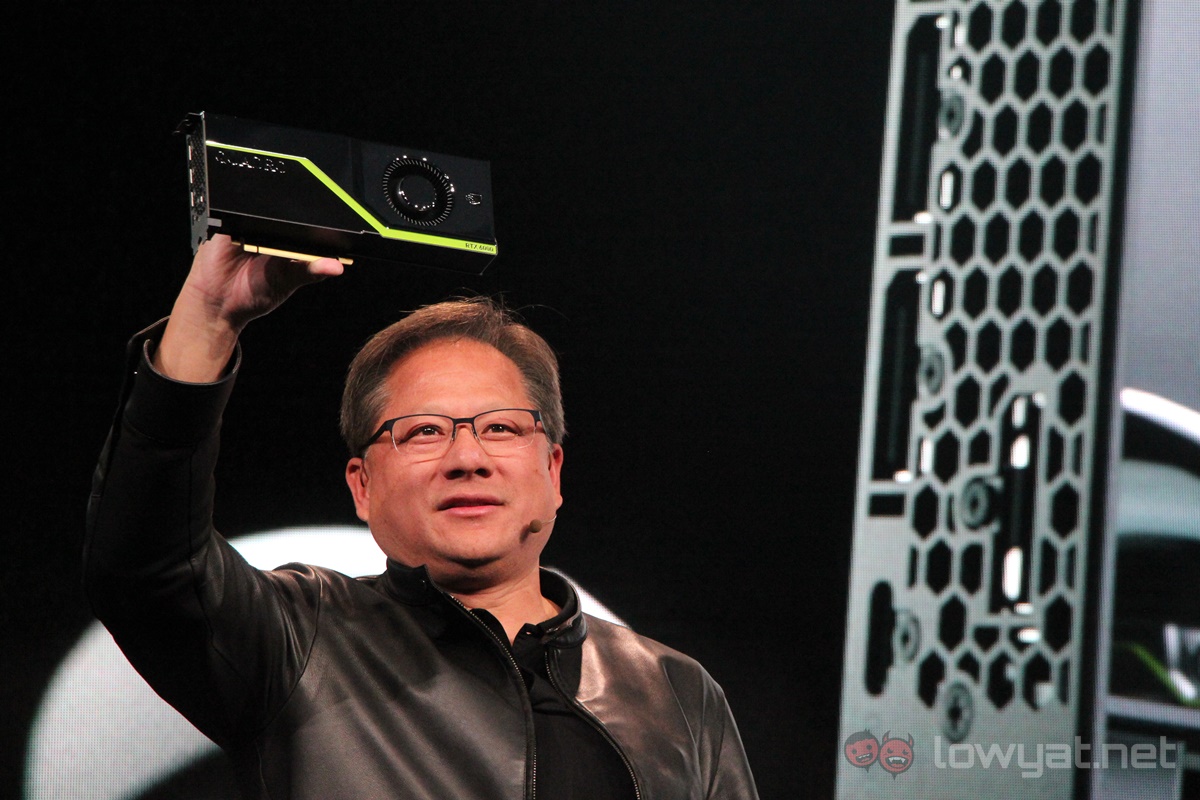
In any case, with Gamescom 2018 set to take place next week, we’ll definitely be getting our answer over the matter then.
Follow us on Instagram, Facebook, Twitter or Telegram for more updates and breaking news.


